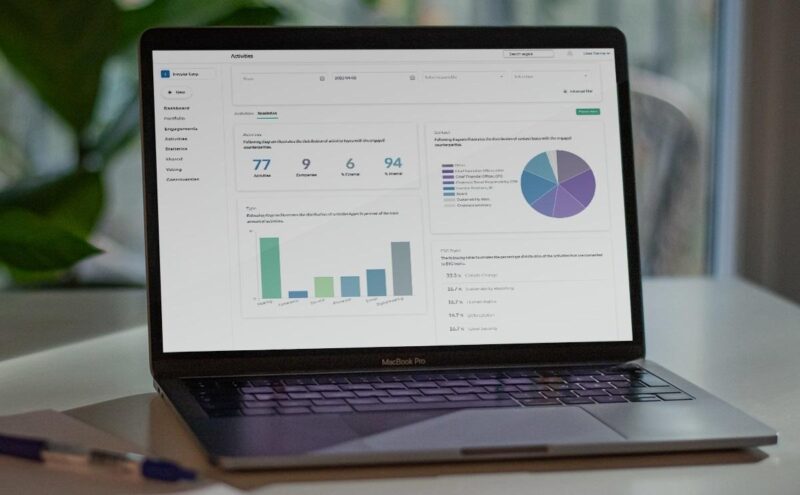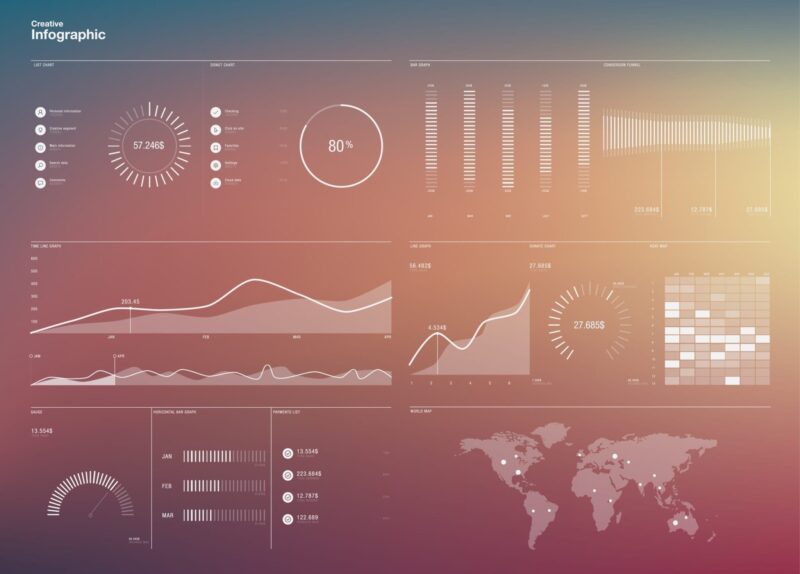The modern online gaming industry is a fast-moving place where operators have to make decisions in real time in order to take advantage of narrow windows of opportunity and avoid unforeseen liabilities.
This wouldn’t be possible without access to a huge trove of data that is constantly being updated with every interaction between a player and an online gaming product. Data is readily available, but there is so much of it that processing it and turning it into actionable insights is a serious challenge.
iGaming companies are constantly finding ways to use quantitative information to support decision-making. Here are some of the most common strategies employed in this sector to leverage the available data sources.
Key Highlights:
- Operators rely on real-time data to improve business responsiveness and prevent losses.
- Traffic data informs marketing ROI and optimizes promotional spending.
- User engagement metrics reveal flaws in website design and navigation.
- Sports betting odds are continuously adjusted based on live input.
- Predictive analytics help forecast long-term market directions.
- Identifying problem gambling behavior supports responsible gaming practices.
Analysing Traffic Data to Fine-tune Marketing Efforts

While iGaming operators are certainly happy to see new visitors no matter what, they can benefit a great deal if they understand how the visitors are arriving to the website. More precisely, it’s imperative to know where the visitors first heard about the brand and/or found the link to follow.
This bit of information reveals which marketing channel was responsible for delivering the visitor to the site, justifying its expense.
Of course, this data is much more useful when it’s analysed on the aggregate. This way, the operator can compare marketing budgets for various promotion types against the volume of traffic they were able to create.
Any observed inefficiency can be easily fixed by cutting the worst performers and doubling down on successful ones. Companies can also learn a great deal if they follow how the traffic volume changes after they launch a specific campaign or offer a new bonus.
Tracking Engagement to Decide on Website Layout

Once the visitor is logged in to the iGaming website, his actions are tracked to see what he interacts with and how much time he spends on each page. The providers want the players to move around with ease, complete basic tasks like making deposits quickly, and spend the bulk of their time online playing actual games.
However, this may not be the case if the players struggle to find key functions or fail to discover too many game titles due to poorly designed interface or other issues.
If the players frequently quit their session without opening any games, that’s a sign that some changes are in order. Other indicators that can sound an alarm about the website’s usability are the number of requests for assistance from members who just joined, and the number of negative internet casino reviews.
Careful data analysis will usually reveal the source of confusion, although designing smart solutions may require additional expertise and creativity.
Using Sports Betting Data to Set Optimal Odds
Sports betting websites may be among the iGaming providers that deal with the greatest quantities of data, but they also have additional ways to profit from it. Getting the odds right for every bet is a matter of survival in this niche, so operators spare no effort to get additional insights.
They crunch historical data and recent performance indicators while accounting for systemic factors such as game location, injured players, etc. This process culminates in setting of the initial odds, but it doesn’t end there.
- Historical data analysis helps build a baseline for setting odds before a match begins.
- Real-time event tracking (injuries, weather changes, in-game momentum) enables fast reaction during live betting.
- Volume of bets per outcome signals which way public sentiment is leaning, which may indicate the need for odds adjustment.
- Betting distribution highlights exposure risks for the operator, prompting dynamic odds shifting.
- Competitor monitoring ensures the odds offered stay competitive without inviting arbitrage.
Depending on the number of bettors and total amount of money on each option, odds may move in either direction. The providers who react before the competitors and adjust their offer to match the structure of demand stand to reap huge benefits.
Looking at Macro Data to Project Future Trends

The most impactful decisions for an iGaming company are strategic turns that determine the direction of the business for many years to come. In this case, top executives can’t rely only on hard data from the past as the goal is to predict how the market will develop in the future.
The only alternative is to use projections, which are notoriously unreliable and may ignore some key factors that have not yet fully manifested. In effect, the biggest decisions are made based on thinnest evidence.
Skilled business leaders learn how to recognise patterns in the existing data and extrapolate them to the upcoming period.
This approach requires extensive knowledge of the field, as well as advanced analytic tools. It’s also highly advisable to stay vigilant and keep comparing projections with the actual measurements, even if the initial predictions appear to be well-founded.
Detecting Patterns of Problematic Gambling
Data analysis can help iGaming providers solve one of the most persistent black eyes soiling the industry reputation. Gambling addition is a real thing, and catch
Dylan Welshing it early before it escalates and results in huge financial and psychological damage is paramount. Fortunately, clues of irrational play are visible in the data, and providers are now training their software to recognise them automatically.
By protecting the most vulnerable players from harm, iGaming companies can fulfil their social responsibility and respond to a line of criticism that has followed them since they entered the market.
Real-time Dashboards Empower Operations

One of the most transformative developments in recent years has been the deployment of real-time dashboards. These tools allow managers and decision-makers to monitor KPIs as they shift minute by minute, providing immediate visibility into key operations. Whether it’s player churn, server loads, or peak bet times, these dashboards act as an early warning system and a tactical guide.
Key benefits of real-time dashboards:
- Immediate course correction during system outages or gameplay interruptions
- Efficient campaign monitoring during time-limited promotions or flash bonuses
- Fraud detection as anomalous activity spikes appear
- Quick performance benchmarking across different geographic or product verticals
Data Collaboration Between Teams
Data isn’t just for the analytics department anymore. In modern iGaming companies, cross-department collaboration on data access and interpretation is critical. Marketing, product development, customer service, and risk departments each bring a unique perspective to the data, and joint interpretation results in better conclusions.
This collaborative model ensures decisions are:
- Grounded in diverse practical insight
- Backed by metrics from multiple viewpoints
- Easier to implement with buy-in across the board
Player Segmentation for Personalized Offers

Not all players are the same, and iGaming companies that treat them as such risk losing revenue and loyalty. Data enables highly specific segmentation based on behavior, demographics, and playing style. Once segments are identified, companies can tailor their offers more effectively.
Here are three steps to effective player segmentation:
- Gather behavioral metrics – Track time of play, preferred games, and session frequency
- Assign players to segments – For example: High-rollers, Casuals, Bonus-hunters
- Deliver targeted offers – Like VIP access, custom bonuses, or retention messages
Table: Key Data Types and Their Usage in iGaming
| Data Type | Usage Example | Value Derived |
|---|---|---|
| Traffic Sources | Ad campaign origin tracking | Marketing budget optimization |
| Engagement Metrics | Session duration, clicks per page | UX/UI improvement |
| Transaction Data | Deposit/withdrawal volume and frequency | Fraud detection, player value scoring |
| Betting Patterns | Bet size trends, timing, preferred markets | Odds setting, game development |
| Customer Support Logs | Issue categories, volume, resolution speed | Process optimization, FAQ development |
Conclusion
iGaming has grown into a massive, data-powered ecosystem where nearly every decision is improved with quantitative input. From the layout of a website to live betting odds, and even responsible gaming strategies, data is the common thread tying it all together.
As technologies evolve, the companies that remain agile and transparent with their data use will not only thrive commercially but also build long-term trust with users and regulators alike. Going forward, mastering data usage isn’t a competitive advantage anymore – it’s a necessity for survival.
Related Posts:
- Eco-Friendly Deliveries ─ Making Green Choices for…
- Will AI Replace Data Analysts? The Future of Data Science
- How to Check SD Card Health on Windows - Keep Your Data Safe
- Why Your Data Center Needs an Attestation of Compliance
- Data Center Design 101: Everything You Need to Know
- What You Should Know About Data Center Cooling Technologies?








